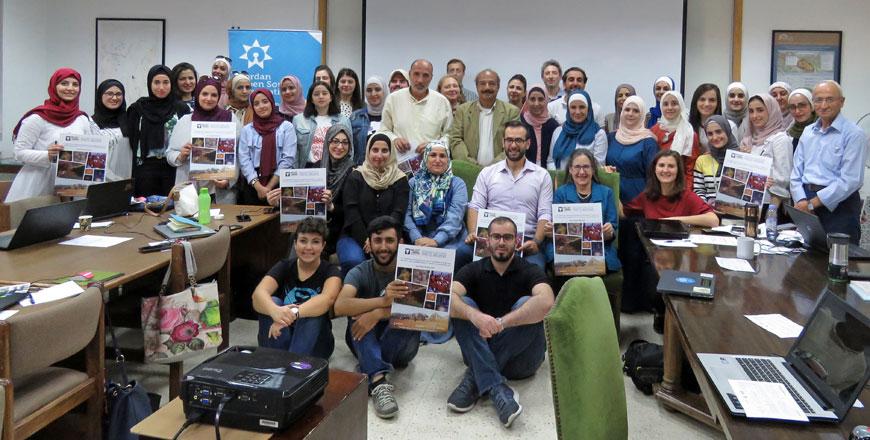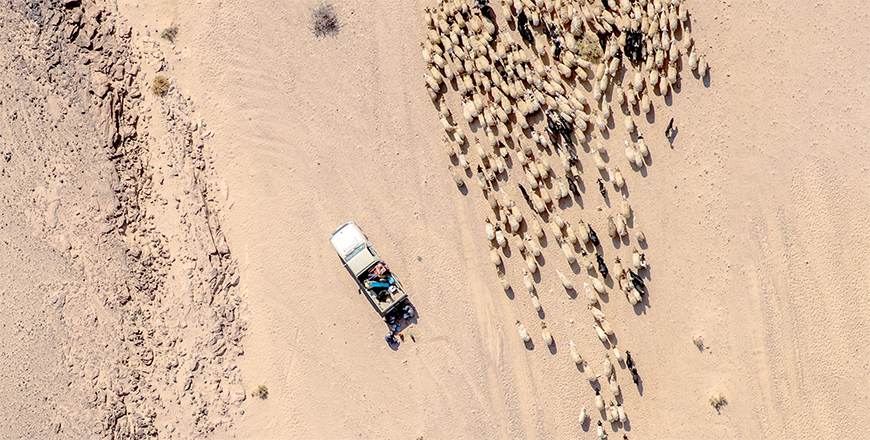You are here
‘Edit-a-thon’ seeks to update online information on Jordanian heritage
By Saeb Rawashdeh - Oct 08,2019 - Last updated at Oct 08,2019

Participants in the Wikipedia edit-a-thon on Jordanian Heritage pose for a photo at ACOR on Monday (Photo courtesy of ACOR)
AMMAN — Fifty students, recent graduates, heritage professionals and journalists gathered on Monday to learn how to edit and create Wikipedia articles at the American Centre of Oriental Research (ACOR).
Archivist Jessica Holland said the ACOR Photo Archive, the Wikimedia Levant and Jordan Open Source Association (JOSA) co-hosted the Wikimedia edit-a-thon event. Raya Sharbain and Nidal Jarar provided training for beginners.
The ACOR Photo Archive team curated a list of articles about heritage in Jordan in need of editing, Holland continued, noting that these articles were about archaeological sites and women who have contributed to Jordanian heritage via conservation and archaeological work or writing.
“After participating in a WikiGAP edit-a-thon in March 2019, in which we focused on women archaeologists, Eslam Al Dawodieh and Hala AlSaqqa created articles about prominent Jordanians. We were inspired to organise an edit-a-thon at ACOR,” said assistant librarian Samiya Kafafi.
She added that they worked with JOSA and Wikimedia Levant on the event to increase the amount of available information in Arabic and English about Jordan's heritage on Wikipedia.
“We use both open-access resources and the ACOR library to create and develop the metadata for the ACOR Photo Archive so we understand how important it is for accurate information to be freely available,” Kafafi explained, adding that they look forward to hosting more events in the future to train more people who are interested in Wikipedia and Jordan's heritage.
Furthermore, to add visual information to the new articles, photographer Bashar Tabbah has donated hundreds of photographs of Jordan to Wikimedia commons, where they can be re-used by anyone, said Holland. The Department of Antiquities participated in the event and presented on archaeological information online.
Tabbah, who also participated in the workshop, spoke of his experiences as a photographer of heritage sites not only in Jordan but around the world.
“Five years ago, I decided to conduct the study of Jordanian archaeological sites and in five years I’ve visited over 300 locations in Jordan,” Tabbah highlighted, adding that one of the biggest challenges he faced was finding archaeological sites.
Another problem that he emphasised was the widespread looting of archaeological sites.
“The more we educate people, the more they will appreciate and love these sites.”
Related Articles
AMMAN — Given the numerous threats facing archaeological and cultural heritage sites in Jordan and the region, whether from war, development
AMMAN — Aghast by the fact that over 90 per cent of the content generated on the online platform Wikipedia is created by men, the Swedish em
AMMAN — After publishing “A Map and a Lens: Jordan Sights Unseen and Stories Untold”, “Unique and Outstanding” and “The Noble Sanctuary”, th
















